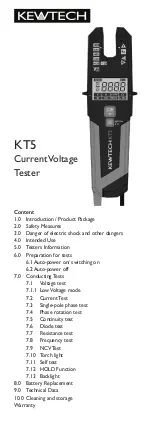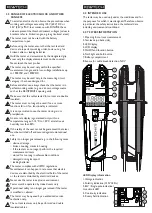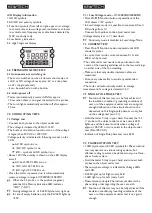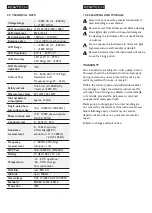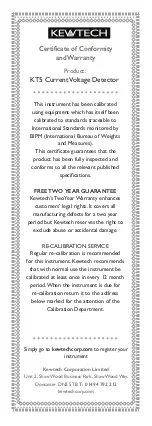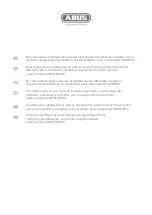
3.0 DANGER OF ELECTRIC SHOCK AND OTHER
DANGERS
To avoid an electric shock, observe the precautions when
working with voltages exceeding 120 V (60 V) DC or
50 V (25 V) eff AC. In accordance with DIN VDE these
values represent the threshold contact voltages (values in
brackets refer to limited ranges, e.g. in agricultural areas).
The tester must not be used with the battery
compartment open
Before using the tester, ensure that the test lead and
device are in perfect working order. Look out e.g. for
broken cables or leaking batteries.
Hold the tester and accessories by the designated grip
areas only, the display elements must not be covered.
Never touch the test probes.
The tester may be used only within the specified
measurement ranges and in low-voltage installations up
to 1000VAC and 1500VDC.
The tester may be used only in the measuring circuit
category it has been designed for.
Before and after use, always check that the tester is in
perfect working order (e.g. on a known voltage source
such as the KEWPROVE3 opening unit).
Make sure that the cables tested for current are double
insulated.
The tester must no longer be used if one or more
functions fail or if no functionality is indicated.
It is not permitted to use the tester during rain or
precipitation.
An accurate display is guaranteed only within a
temperature range of -15°C to +55°C at relative air
humidity less than 85%.
If the safety of the user cannot be guaranteed, the tester
must be switched off and secured against unintentional
use.
Safety is no longer guaranteed e.g. in the following cases:
− obvious damage
− broken housing, cracks in housing
− if the tester can no longer perform the required
measurements/ tests
− stored for too long in unfavorable conditions
− damaged during transport
− leaking batteries
The tester complies with all EMC regulations.
Nevertheless it can happen in rare cases that electric
devices are disturbed by the electrical field of the tester
or the tester is disturbed by electrical devices.
Never use the tester in explosive environment
Tester must be operated by trained users only
Operational safety is no longer guaranteed if the tester
is modified or altered.
The tester may be opened by an authorized service
technician only.
The current test may only be performed on double
insulated cables.
4.0 INTENDED USE
The tester may be used only under the conditions and for
the purposes for which it was designed. Therefore, observe
in particular the safety instructions, the technical data
including environmental conditions.
5.0 TESTERS INFORMATION
1. Opening for current measurement
2. Test leads (on back side)
3. LED display
4. LCD display
5. On/Off and function button
6. Torchlight and hold button
7. Battery compartment
8. Sensor for cable break detection, NCV
LED Display information
1. Voltage indication
2. Polarity indication (120V LEDs)
3. ELV / Single pole indication /
Live circuit LED
4. Continuity indication
5. Rotary field indication
HOLD 3s
♪
6s
1000
690
400
230
120 120
+
R
L
Rx
V
AC
DC
1
8
2
3
4
5
6
7
1
2
HOLD 3s
♪
6s
1000
690
400
230
120 120
+
R
L
Rx
V
AC
DC
3
4
5

